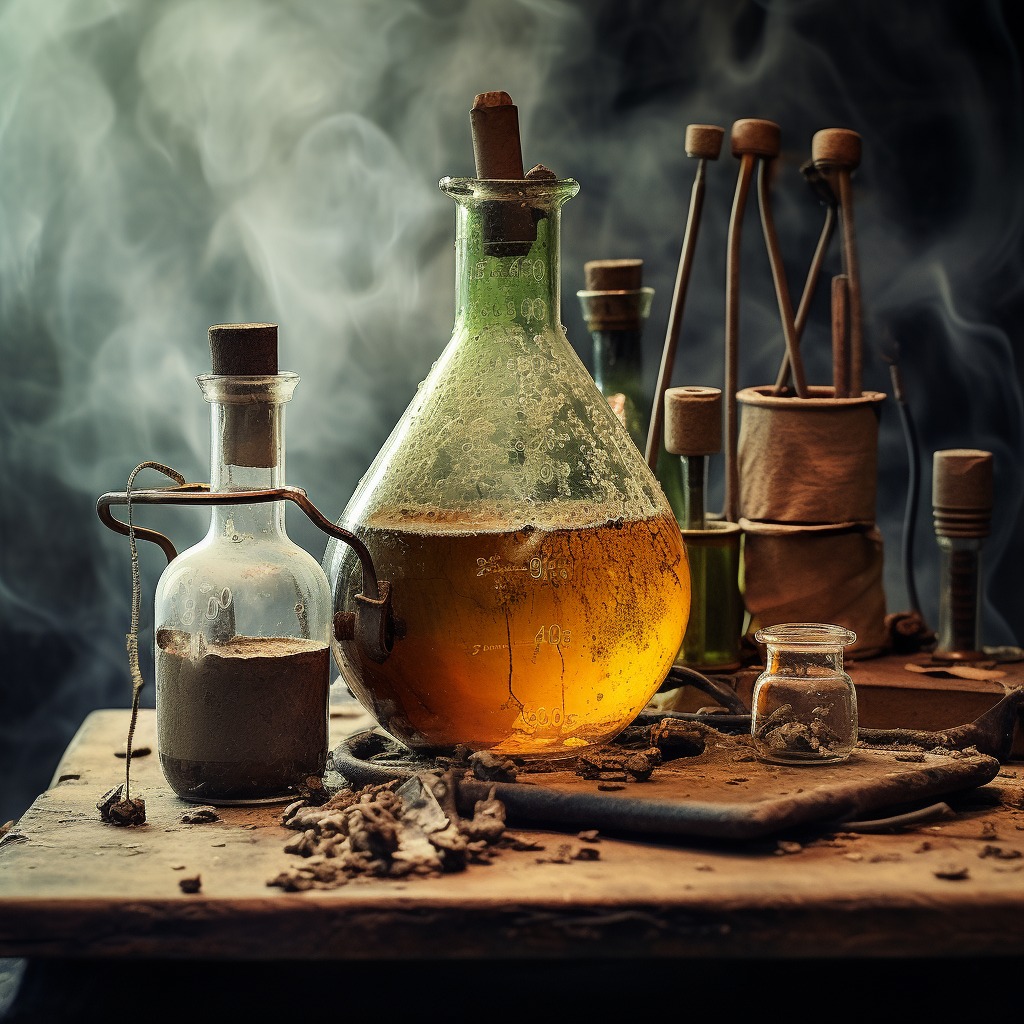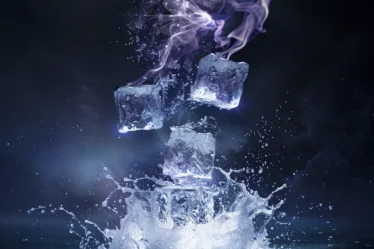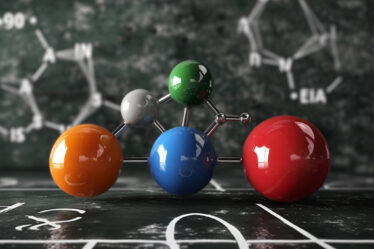
If you’ve ever witnessed rust forming on iron or a piece of fruit turning brown after being cut open, you have encountered redox reactions in real life. These reactions, which encompass both oxidation and reduction processes, play a pivotal role in numerous natural and industrial procedures. As we delve deeper into chemistry, redox reactions become increasingly crucial.
Here’s a glimpse of what you’ll learn:
- The fundamentals of redox reactions.
- Half-reaction method for balancing.
- Illustrative examples in various environments.
- Real-world applications of redox reactions.
- The role of tutors in simplifying complex concepts.
- Useful online resources and tools for learning chemistry.
- Frequently asked questions (FAQ) section addressing common queries.
- Comprehensive glossary of key terms related to redox reactions.
Struggling with biology topics? Explore our extensive collection of biology educational blog posts designed to simplify complex concepts for you. Whether it’s photosynthesis, the intricacies of green algae, understanding bacteria and viruses, or delving into the fascinating world of genetics and cells, our resources have got you covered. Expand your knowledge and enhance your learning journey with us today.
Understanding Redox Reactions: Reduction and Oxidation
The term ‘Redox’ is an abbreviation for ‘Reduction Oxidation.’ These reactions involve the transfer of electrons between two species, a fascinating process that we will examine in more detail. With numerous practical applications and strong relevance to our day-to-day life, understanding redox reactions is an essential part of a comprehensive education in chemistry.
In this blog post, we will explore the definition of redox reactions, break down their key components, illustrate the process with examples and formulas, and discuss their wide-ranging applications. We will also delve into how tutors can aid students in mastering this concept and the online resources available for further learning.
Redox reactions, short for reduction-oxidation reactions, are fundamental chemical processes in various natural and industrial settings. With their ubiquitous presence and significant applications, understanding redox reactions is an important milestone in mastering chemistry.
What is Viscosity and How to Calculate It?
Decoding ‘Redox’
The term redox signifies the simultaneous processes of reduction and oxidation that occur in these reactions. In a redox reaction, one substance undergoes oxidation (loses electrons) while another undergoes reduction (gains electrons). These processes co-occur; an easy way to remember this is through the acronym OIL RIG, which stands for ‘Oxidation Is Loss’ and ‘Reduction Is Gain.’
Oxidation and reduction cannot occur in isolation; they are paired processes. The substance that loses electrons becomes oxidized, and the substance that gains these electrons becomes reduced. This relationship establishes the key electron transfer concept at the heart of all redox reactions.
Oxidizing and Reducing Agents
In this tandem dance of electrons, we meet the two main participants: oxidizing and reducing agents. The oxidizing agent, true to its name, facilitates oxidation. It accepts electrons from another substance, causing it to lose electrons and oxidize. Simultaneously, the oxidizing agent itself undergoes reduction.
Contrarily, the reducing agent initiates reduction. It donates electrons, causing another substance to gain electrons and become reduced. In this process, the reducing agent itself gets oxidized. This intricate exchange is what drives the redox process forward.
How to calculate Molar Mass and Mass Fraction?
Importance of Electrons in Redox Reactions
The star players in redox reactions are electrons. Their movement or transfer forms the basis of these reactions. When an atom, ion, or molecule donates an electron (thereby getting oxidized), another one must be there to accept it (getting reduced in the process). This interplay forms the core of a redox reaction and shapes the many processes and applications dependent on it.
Oxidation Numbers: Indicators of Redox Reactions
Oxidation numbers play a crucial role in redox reactions. These numbers hypothetically represent the charge an atom would bear if all shared electrons in a molecule were assigned entirely to the atom with a higher affinity for electrons. Changes in oxidation numbers during a chemical reaction hint at a redox process.
An increase in an atom’s oxidation number indicates oxidation, while a decrease signifies reduction. By analyzing these numbers, we can identify whether a reaction is redox and, if so, which atoms are oxidized and which are reduced.
With this fundamental understanding of redox reactions, we are ready to delve deeper into their intricacies, explore their varied applications, and appreciate their impact on the world.
Ethanol and Alcohols in Chemistry explained.
Examples and Formulas of Redox Reactions
Redox reactions, with their vibrant dynamics of electron exchange, are vital players in many natural and synthetic processes. Here, we will illustrate some examples, provide formulas, and use the half-reaction method to balance them.
Example of a Simple Redox Reaction
The reaction between hydrogen and fluorine to produce hydrogen fluoride is a simple example of a redox reaction:
H2 + F2 → 2HF
In this reaction, hydrogen is oxidized (loses electrons), and fluorine is reduced (gains electrons).
What are Hydroxides?
Half-Reaction Method Illustration
The half-reaction method is a powerful tool to balance redox reactions. It simplifies the process by breaking the reaction into individually balanced oxidation and reduction components.
Let’s begin by using the half-reaction method to balance the decomposition of hydrogen peroxide (H2O2) into water (H2O) and oxygen (O2):
- Oxidation: 2H2O2 → 2H2O + O2
- Reduction: Nothing happens in this reaction, as no species are being reduced.
After balancing each half-reaction, we combine them to derive the overall balanced reaction.
Now, let’s proceed to another redox reaction to see the half-reaction method in action. Consider the reaction where iron (II) ions react with permanganate (MnO4–) in an acidic solution to produce iron (III) ions and manganese (II) ions:
- Oxidation: Fe2+ → Fe3+ + e–
- Reduction: MnO4– + 8H+ + 5e– → Mn2+ + 4H2O
After balancing each half-reaction and ensuring the number of electrons in both half-reactions is equal, we combine them to yield the overall balanced redox reaction:
5Fe2+ + MnO4– + 8H+ → 5Fe3+ + Mn2+ + 4H2O
These illustrations clarify the half-reaction method’s utility in handling even complex redox reactions.
Redox in Varied Settings
Redox reactions may occur in acidic or basic conditions, requiring a unique balancing approach. Typically, in acidic solutions, we use H+ ions and H2O, while OH– ions are used in basic solutions for balancing.
Explore Acids, Bases and pH.
Redox Reactions Around Us
Several daily occurrences are examples of redox reactions, each with its unique equation. Here are some instances:
- Combustion: The burning of wood in a fire is a typical redox reaction where carbon in the wood (C) is oxidized to produce carbon dioxide (CO2), and oxygen (O2) is reduced.
- Respiration: In cellular respiration, glucose (C6H12O6) is oxidized, and oxygen (O2) is reduced to form water (H2O) and carbon dioxide (CO2).
- Corrosion: The formation of rust is a slow redox reaction where iron (Fe) is oxidized to produce iron(III) oxide (Fe2O3), a common form of rust.
Understanding these instances makes the concept of redox reactions more tangible, highlighting their role in our daily lives and natural phenomena.
Real World Applications of Redox Reactions
Redox reactions are more than just fascinating chemical processes; they underpin numerous everyday occurrences and industrial applications. From our bodies to the electronics we use daily, redox reactions are ubiquitous. Here’s a look at some critical applications:
- Energy Production: Many energy storage or conversion devices, such as batteries and fuel cells, function based on redox reactions. For instance, in a battery, the anode undergoes oxidation, losing electrons, while the cathode undergoes reduction, gaining those electrons. This electron flow provides the electrical energy that powers our devices.
- Metabolic Processes: Essential life processes, such as cellular respiration, involve redox reactions. In this process, glucose is oxidized and combined with oxygen (which is reduced) to release energy, carbon dioxide, and water.
- Industrial Processes: Numerous industrial procedures hinge on redox reactions. From the production of fertilizers and plastics to various chemical syntheses, redox reactions play a pivotal role. The Haber process, for example, reduces nitrogen to ammonia, a critical component of many fertilizers.
- Environmental Phenomena: Many natural processes involve redox reactions, including some we might regard as nuisances. The rust forms on iron due to an oxidation process, as is the browning that occurs when you cut fruits and vegetables.
Understanding redox reactions provides valuable insights into the chemical mechanisms behind many natural and technological processes. It illustrates how fundamental scientific principles can influence our everyday lives and the world.
How to calculate the Concentration of a Solution?
Role of Tutors in Learning Chemistry
Chemistry, with its intricate concepts and formulas, can be challenging. Tutors play a significant role in simplifying complex ideas, like redox reactions, making them understandable and less daunting. Using analogies, real-world examples, and step-by-step approaches, tutors can transform abstract concepts into comprehensible knowledge. They provide individualized attention and cater to a student’s unique learning style. This personalized guidance and consistent feedback can significantly boost a student’s confidence and performance in chemistry.
Looking for a chemistry tutor? Enter “chemistry tutor Glasgow” or “chemistry teacher Sheffield” on your preferred tutoring platform, such as meet’n’learn to find a teacher who can meet your specific needs.
If you thrive in group learning environments, search “chemistry classes London” or “chemistry lessons Manchester” online to discover local schools offering chemistry lessons.
Online Resources for Learning Chemistry
The digital age provides many online resources for learning chemistry. Websites like Khan Academy, Coursera, and Chemguide offer free courses and educational materials. Interactive tools such as molecular modeling software and virtual labs can simulate real-life experiments. Online forums like Stack Exchange allow students to ask questions and engage in insightful discussions. These resources offer flexible learning opportunities and can complement traditional classroom instruction.
How is a Covalent Bond Formed?
Conclusion
In conclusion, mastering redox reactions is crucial in chemistry. By understanding the fundamentals and utilizing the half-reaction method for balancing, you can confidently navigate various redox reactions. The illustrative examples provided demonstrate their relevance in different environments and real-world applications.
Moreover, the valuable role of tutors in simplifying complex concepts and providing personalized lessons is undeniable. Whether through private tutoring or chemistry classes, having a knowledgeable tutor can greatly enhance your understanding. Additionally, exploring online resources and tools can supplement your learning journey. Remember to refer to the frequently asked questions (FAQ) section and comprehensive glossary to clarify doubts. By leveraging the expertise of a tutor and employing the resources available, you can excel in understanding redox reactions.
Discover your ideal chemistry tutor at meet’n’learn and skyrocket your understanding to new heights!
FAQs: Addressing Common Questions About Redox Reactions
1. What is a redox reaction?
A redox (reduction-oxidation) reaction involves electron transfer between two substances. One substance loses electrons and is oxidized, while the other gains electrons and is reduced.
2. How can you recognize a redox reaction?
You can recognize a redox reaction by identifying changes in oxidation numbers of the atoms involved in the reaction. If the oxidation number of an atom changes as you go from reactants to products, then a redox reaction has occurred.
3. What are some examples of redox reactions?
Examples of redox reactions include combustion processes like burning wood, cellular respiration in our bodies, and corrosion processes like the rusting of iron.
4. What is the significance of redox reactions in daily life?
Redox reactions are essential in numerous natural processes and technological applications. They underpin energy production in batteries and metabolic processes in our bodies and are involved in numerous industrial chemical processes.
5. What is the half-reaction method?
The half-reaction method is a systematic approach to balance redox reactions. It involves separating the overall reaction into two half-reactions (oxidation and reduction) and balancing them separately before combining them back into the overall balanced reaction.
Complete Chemistry Glossary: Redox Reactions
Redox Reaction: A chemical reaction involving the transfer of electrons between two substances. It includes two simultaneous processes – oxidation and reduction.
Oxidation: A process in a redox reaction where a substance loses electrons.
Reduction: A process in a redox reaction where a substance gains electrons.
Oxidizing Agent: The substance in a redox reaction that accepts electrons, i.e., it causes another substance to be oxidized.
Reducing Agent: The substance in a redox reaction that donates electrons, i.e., it causes another substance to be reduced.
Half-reaction: Part of the overall redox reaction that represents either the oxidation or reduction process.
Oxidation Number: A number assigned to an atom in a molecule or ion that represents its apparent charge in the compound.


